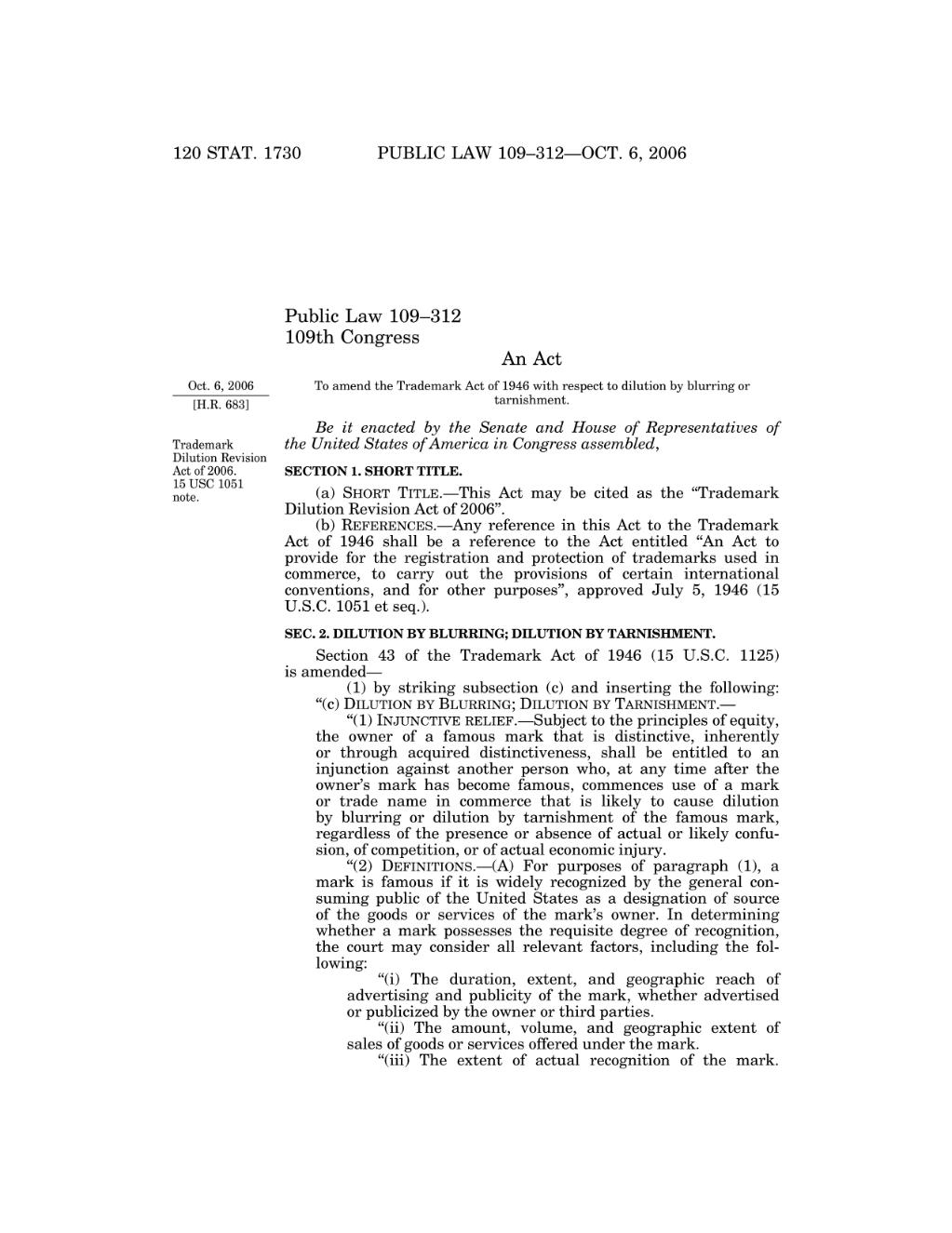120 STAT. 1730
PUBLIC LAW 109–312—OCT. 6, 2006
Public Law 109–312 109th Congress An Act Oct. 6, 2006
To amend the Trademark Act of 1946 with respect to dilution by blurring or tarnishment.
[H.R. 683] Trademark Dilution Revision Act of 2006. 15 USC 1051 note.
Be it enacted by the Senate and House of Representatives of the United States of America in Congress assembled, SECTION 1. SHORT TITLE.
(a) SHORT TITLE.—This Act may be cited as the ‘‘Trademark Dilution Revision Act of 2006’’. (b) REFERENCES.—Any reference in this Act to the Trademark Act of 1946 shall be a reference to the Act entitled ‘‘An Act to provide for the registration and protection of trademarks used in commerce, to carry out the provisions of certain international conventions, and for other purposes’’, approved July 5, 1946 (15 U.S.C. 1051 et seq.). SEC. 2. DILUTION BY BLURRING; DILUTION BY TARNISHMENT.
Section 43 of the Trademark Act of 1946 (15 U.S.C. 1125) is amended— (1) by striking subsection (c) and inserting the following: ‘‘(c) DILUTION BY BLURRING; DILUTION BY TARNISHMENT.— ‘‘(1) INJUNCTIVE RELIEF.—Subject to the principles of equity, the owner of a famous mark that is distinctive, inherently or through acquired distinctiveness, shall be entitled to an injunction against another person who, at any time after the owner’s mark has become famous, commences use of a mark or trade name in commerce that is likely to cause dilution by blurring or dilution by tarnishment of the famous mark, regardless of the presence or absence of actual or likely confusion, of competition, or of actual economic injury. ‘‘(2) DEFINITIONS.—(A) For purposes of paragraph (1), a mark is famous if it is widely recognized by the general consuming public of the United States as a designation of source of the goods or services of the mark’s owner. In determining whether a mark possesses the requisite degree of recognition, the court may consider all relevant factors, including the following: ‘‘(i) The duration, extent, and geographic reach of advertising and publicity of the mark, whether advertised or publicized by the owner or third parties. ‘‘(ii) The amount, volume, and geographic extent of sales of goods or services offered under the mark. ‘‘(iii) The extent of actual recognition of the mark.
VerDate 14-DEC-2004
13:05 Jul 12, 2007
Jkt 059194
PO 00002
Frm 00474
Fmt 6580
Sfmt 6581
E:\PUBLAW\PUBL002.109
APPS06
PsN: PUBL002
�
